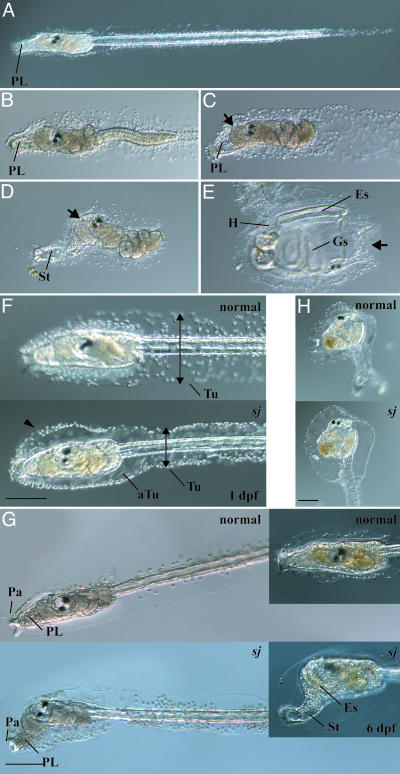Fig. 1.
Metamorphosis of C. intestinalis and phenotypes of the sj mutant. (A) A swimming larva. PL, preoral lobe. (B) A larva during tail resorption. (C) After the completion of tail resorption, the preoral lobe becomes long and transparent and is called the stalk (St in D). (D) During the formation of the stalk, body axis rotation is initiated, and the trunk rotates by 90°. The oral siphon is shown by an arrow. (E) A juvenile that has completed body axis rotation. Adult organs such as gill slits (Gs), endostyle (Es), and heart (H) are formed. The position of the oral siphon (arrow) is completely different from the initial position (an arrow in D). (F) At 1 dpf, the larval tunic (Tu) of a sj mutant larva (sj) was narrower at the tail (arrows), whereas it swelled in the trunk region (arrowhead), compared with a normal larva (normal). The adult tunic (aTu) of a sj larva was normally formed inside the larval tunic. (Bar, 100 μm.) (G) At 2 dpf, a sj mutant started body axis rotation without tail resorption. (Bar, 100 μm.) (Insets) At 6 dpf, the preoral lobe of a sj mutant larva became long and transparent to form the stalk (St). The endostyle (Es) became longer in the sj larva than a normal larva. (H) A metamorphosed sj mutant (Lower) showed normal body organization compared with normal juveniles (Upper). (Bar, 100 μm.)

